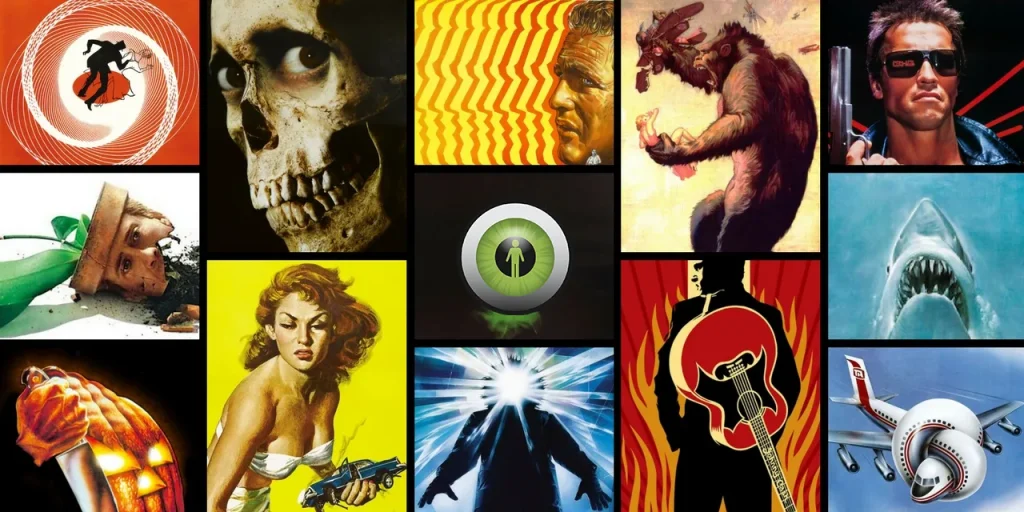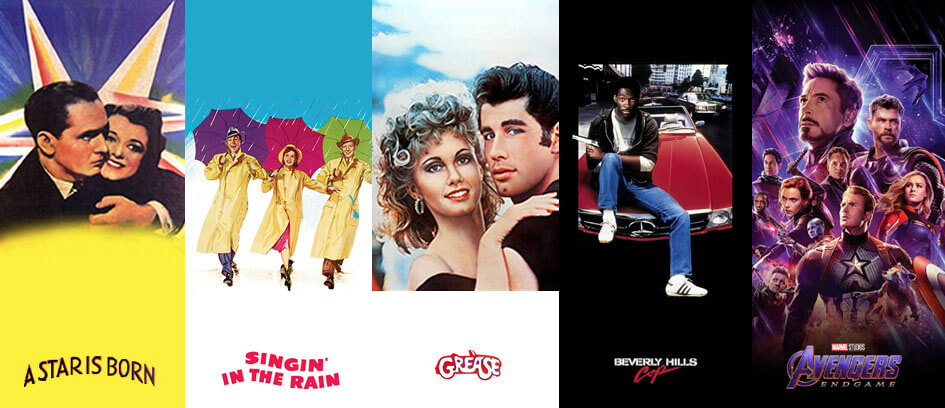
Introduction
Movie posters are more than just promotional tools; they are an essential part of a film's identity and cultural impact. An iconic movie poster can capture the essence of a film, entice audiences, and remain etched in the public's memory long after the movie has left theaters. This article explores the top 10 most iconic movie posters of all time, highlighting their significance and enduring appeal.
1. Jaws (1975)
The poster for Jaws, designed by Roger Kastel, is arguably one of the most iconic in cinematic history. Its simplicity and effectiveness are unmatched. The image of a massive great white shark rising from the deep towards an oblivious swimmer creates an immediate sense of dread and suspense. The bold, block-lettered title "JAWS" in red further emphasizes the threat and urgency. This poster not only perfectly encapsulates the terror of the film but also played a significant role in building the anticipation that led to the movie's phenomenal success. Its imagery and tagline, "You'll never go in the water again," have become deeply embedded in popular culture.
2. Star Wars (1977)
The original Star Wars poster, created by artist Tom Jung, captures the epic scope and adventurous spirit of the film. The poster features Luke Skywalker holding a lightsaber aloft, with Princess Leia by his side, framed by the looming presence of Darth Vader's mask. The cosmic backdrop and the tagline "A long time ago in a galaxy far, far away..." instantly transport viewers to a fantastical universe. This poster's dynamic composition, vibrant colors, and heroic imagery helped establish Star Wars as a monumental cinematic event and a cultural phenomenon. Its design elements have been endlessly referenced and parodied, cementing its iconic status.
3. E.T. the Extra-Terrestrial (1982)
Designed by John Alvin, the poster for E.T. the Extra-Terrestrial is both simple and evocative. It depicts the famous scene where E.T. and Elliott's fingers touch, set against a backdrop of a starry night sky with the Earth below. This image symbolizes the film's themes of connection, wonder, and otherworldly friendship. The minimalist design, featuring just the glowing fingertip touch, speaks volumes about the emotional core of the movie. The poster's ability to convey so much with so little has made it an enduring symbol of cinematic magic and innocence.
4. Pulp Fiction (1994)
The Pulp Fiction poster, featuring Uma Thurman as Mia Wallace, is a modern classic that perfectly captures the film's edgy, retro vibe. Designed by James Verdesoto and Vivek Mathur, the poster mimics the look of a pulp magazine cover, complete with worn edges, a cheap price tag, and bold fonts. Thurman's sultry pose, cigarette in hand, and the stark contrast of the red background with her black outfit create a striking visual impact. The poster's distinctive style and its association with Quentin Tarantino's groundbreaking film have made it a staple of pop culture.
5. The Silence of the Lambs (1991)
The poster for The Silence of the Lambs, designed by Dawn Baillie, is hauntingly memorable. It features a close-up of Jodie Foster's face with a death's-head hawkmoth covering her mouth. The moth, with its skull-like pattern, hints at the film's dark and psychological themes. The high contrast of the image, combined with the stark, minimalist design, creates an unsettling and intriguing visual. This poster effectively conveys the eerie and disturbing tone of the film, making it one of the most recognizable and impactful movie posters ever created.
6. Breakfast at Tiffany's (1961)
Featuring Audrey Hepburn in her iconic role as Holly Golightly, the Breakfast at Tiffany's poster is a timeless representation of elegance and sophistication. Designed by Robert McGinnis, the poster showcases Hepburn in her famous little black dress, pearls, and tiara, holding a cigarette holder. The pastel color palette and the glamorous pose perfectly capture the chic and stylish essence of the film. This poster has become synonymous with classic Hollywood glamour and has solidified Audrey Hepburn's image as a fashion icon.
7. Jurassic Park (1993)
The Jurassic Park poster, created by John Alvin, is a masterclass in simplicity and intrigue. The poster features the now-iconic T-Rex skeleton logo against a black background, with the tagline "An adventure 65 million years in the making." This minimalist design effectively conveys the film's sense of wonder and excitement while hinting at the prehistoric dangers lurking within. The Jurassic Park logo has become one of the most recognizable symbols in cinema, representing the thrilling and groundbreaking nature of the film.
8. Psycho (1960)
The poster for Alfred Hitchcock's Psycho, designed by Tony Palladino, is as unsettling as the film itself. It features a striking image of Janet Leigh screaming, framed by bold, blocky text. The high-contrast black-and-white design, combined with the jarring red title, creates a sense of shock and unease. This poster's stark, minimalist approach perfectly captures the film's themes of psychological horror and suspense. Its iconic status is a testament to its powerful and lasting impact on audiences.
9. Raiders of the Lost Ark (1981)
The Raiders of the Lost Ark poster, illustrated by Richard Amsel, captures the adventurous spirit of the film and the charisma of its lead character, Indiana Jones. The poster features Harrison Ford as Indiana Jones, standing in a heroic pose with his whip and fedora, surrounded by scenes of action and adventure. The detailed artwork and vibrant colors convey the excitement and exotic locales of the film. This poster has become an enduring symbol of cinematic adventure and has played a significant role in establishing Indiana Jones as an iconic character.
10. The Godfather (1972)
The Godfather poster, designed by S. Neil Fujita, is a masterclass in understated elegance. The black-and-white design features Marlon Brando as Vito Corleone, with the film's title in a distinctive, stylized font. This minimalist approach perfectly captures the film's themes of power, family, and tradition. The poster's simplicity and the stark image of Brando's imposing figure have made it an enduring symbol of classic cinema. Its influence can be seen in numerous homages and parodies, further cementing its iconic status.
